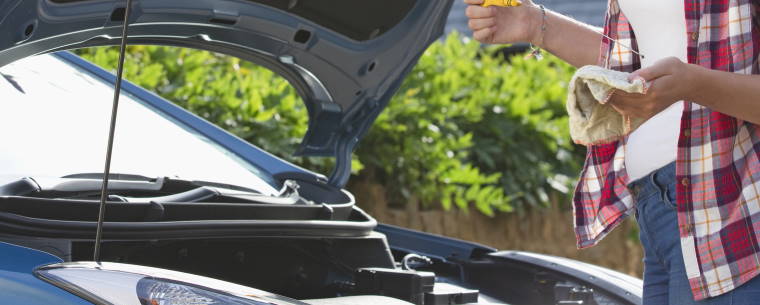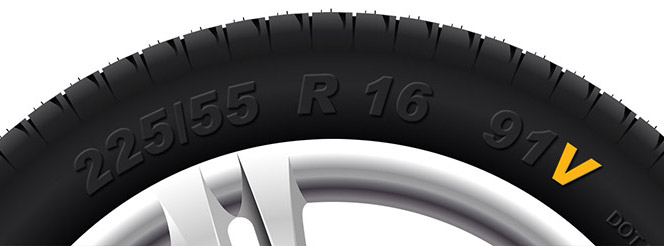4 DIY Maintenance Jobs You Can Do at Home
Published on: Wednesday, 15 April 2020 | Author: Bradley Jando
When it comes to looking after your vehicle, improving overall performance and safeguarding its longevity, regular maintenance is essential. Of course, while taking your car to a professional technician for annual checkups, services and MOT tests is paramount, being able to carry out basic car maintenance jobs at home is also an important aspect of vehicle ownership.
From replacing your windscreen wiper blades to regularly checking your oil and coolant levels, there are plenty of DIY car maintenance jobs you can complete quickly and safety at home without needing a trip to your local vehicle maintenance and testing centre.
To help you get started, here are four basic car maintenance jobs you can do yourself at home.
1. Windscreen maintenance
Regular windscreen checks are an important part of car maintenance and can be done easily from home. Chips in windscreens and windows, for example, can be repaired relatively inexpensively at home using special windscreen resin. Spotting chips before they turn into cracks can save you hundreds of pounds in full windscreen replacements later down the line.
Similarly, checking the condition of your windscreen wipers on a regular basis and replacing them when needed is also a simple DIY car maintenance job you can do at home. Why wait for your annual MOT test to flag your cracked, perishing or misshapen wiper blades when a new set is cheap and incredibly easy to fit yourself? Remember - windscreen wipers are one of your vehicle’s most important safety features and driving with a compromised set is not only unwise but also very dangerous.
2. Tyre checks
When it comes to car maintenance jobs you can do at home, despite being vitally important, correctly checking and maintaining your tyres is perhaps the simplest to carry out. Your car’s tyres should be inspected for damage, as well as their pressure monitored, on a regular basis and always before long trips. UK law requires that all car tyres must have a tread depth of at least 1.6mm around 75 per cent of the tyre. To check your tyre tread at home, simply take a 20p piece and insert it into the grooves on each tyre. If you can’t see the outer band of the 20p, the tyre’s tread meets the legal requirement. However, if the outer band of the coin can still be seen, your tyres could be illegal and unsafe. If this is the case, they will need to be inspected by a professional technician and potentially replaced. If you spot any abnormal wear on a tyre, this could point to suspension issues or wheel misalignment.
Tyre pressure is also a car maintenance check that can be done easily at home. When your car’s tyres are over or under-inflated it can become dangerous to drive. From a serious loss of traction which affects cornering to being more prone to blowouts and making your car less economical, it is important to check tyre pressure every two weeks - especially during periods of the year when temperatures fluctuate. The correct pressure for your car’s tyres will be found in your owner’s manual. Finally, when you check your tyres at home using your own gauge, it’s important to ensure that they are cold and have been sitting unused for at least an hour - this will make sure you take an accurate reading.
3. Oil and coolant checks
Making sure your vehicle’s engine oil and coolant levels are correct is an often overlooked aspect of car maintenance, despite being incredibly simple to do. Oil ensures all moving parts of your engine do not grind against each other, preventing unnecessary wear and damage. If your vehicle doesn’t have enough oil, your engine can become unlubricated and prone to overheating. With this in mind it is recommended that car owners check oil levels every couple of weeks and prior to any long journeys.
To check your vehicle’s oil level, make sure your engine is cool and that your car is parked on level ground - this allows the oil to settle properly. Remove the dipstick and wipe it clean using a rag or a piece of paper towel, then replace it. Wait a second and withdraw the dipstick for a second time. If your oil level is correct it will leave an oilmark between the two markers on the dipstick. If the oil does not register between the two marks, it needs topping up. Remember - oil levels should only be replaced with the oil specified in your vehicle’s owner’s manual, and should never exceed the maximum fill line on your car’s dipstick.
Checking your car’s coolant levels on a regular basis is equally important and can also be done easily from home. Used to prevent the water in your car's radiator system from freezing in sub-zero conditions, coolant also stops this fluid from boiling and evaporating in hot temperatures and keeps your engine from overheating. Checking your vehicle’s coolant levels is simple. Ensuring the engine is not running and is cold, open the overflow bottle attached to your engine’s cooling system - typically this will have a brightly coloured cap - and simply check that the coolant fluid level is sitting between the low and high markings on the inside of the bottle. If you need to top the coolant up, make sure that you only refill with the specific type of coolant listed in your owner’s manual.
4. Battery maintenance
Your car’s battery powers the vehicle’s entire electrical system and is essential in starting the engine. It should come as no surprise then that if it is not properly maintained, faults can occur, performance can drop and unexpected breakdowns and electrical issues can become more common.
Fortunately, maintaining your battery yourself from home is simple. It is recommended that car owners check that battery terminals are clean and tight every couple of months, as well as keeping an eye out for any signs of corrosion or leak damage. To clean your battery, disconnect it and then, wearing protective gloves and eyewear, scrub the terminals using a damp cloth and a mixture of water and baking soda. A wire brush or an old toothbrush can be used on particularly stubborn areas. Once it is clean and has been allowed to dry completely, reconnect your battery, ensuring that you attach the positive cable first.
So, there you have it - four simple DIY car maintenance jobs you can do at home. But remember, if you have any questions about the specifics of these jobs, always make sure you ask a professional for help and advice before getting started.




